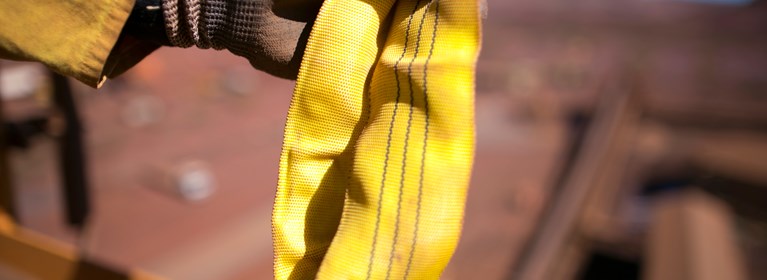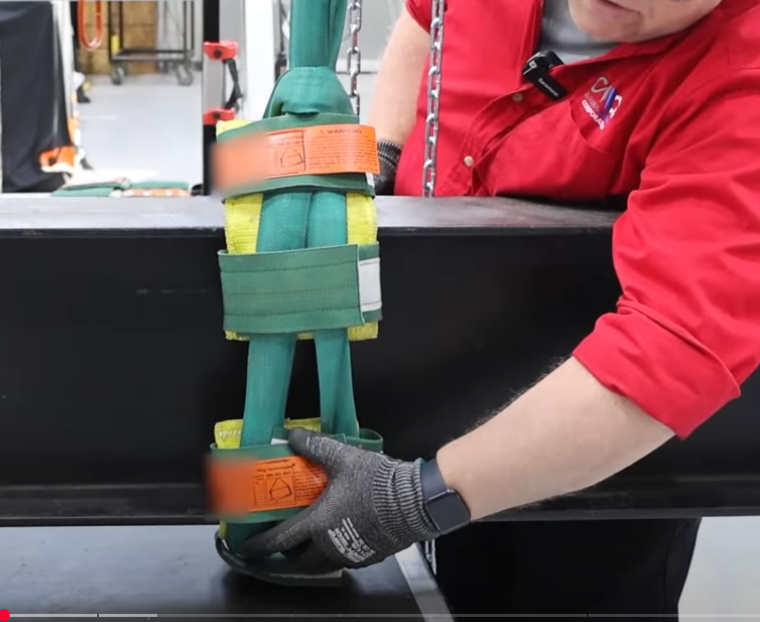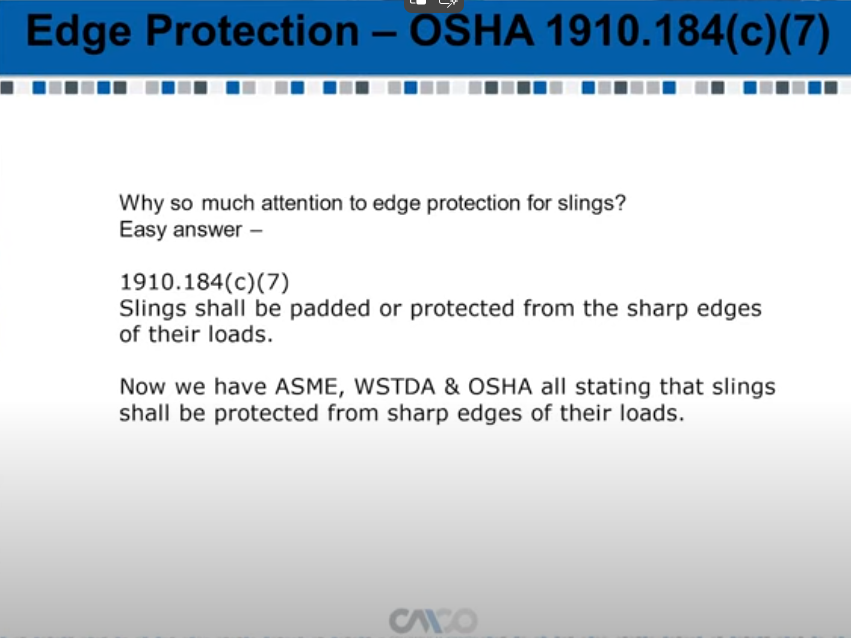
Rigging Edge Protection: A Small Step That Prevents Big Failures
By Columbus McKinnon | Jul 15, 2025
Rigging Edge Protection: A Small Step That Prevents Big Failures
In the construction and lifting industry, the smallest mistake can cause costly damage. One often-overlooked detail is using edge protection for slings when lifting a load.
Edge protection may seem minor, but it plays a critical role in preventing sling failure, protecting loads, and keeping crews safe.
Why Do I Need Edge Protection?
 Because a sharp edge doesn't have to look sharp to be dangerous.
Because a sharp edge doesn't have to look sharp to be dangerous.
In a recent discussion, Henry Brozyna, Industrial Products Trainer at Columbus McKinnon, shared key insights into why edge protection deserves more attention on the jobsite. According to Henry, many riggers still underestimate the potential for damage when slings come into contact with load edges — even those that appear smooth.
“If the edge can damage your hand, it can damage a sling,” Henry explained.
This simple rule of thumb highlights the hidden risks that are often overlooked in daily operations.
OSHA 1910.184(c)(7): What the Standard Says
 Edge protection isn’t just a best practice — it’s a legal requirement.
Edge protection isn’t just a best practice — it’s a legal requirement.
The Occupational Safety and Health Administration (OSHA) states:
1910.184(c)(7) – “Slings shall be padded or protected from the sharp edges of their loads.”
This requirement is reinforced by two other key authorities:
- ASME B30.9
- WSTDA (Web Sling & Tie Down Association)
All three organizations agree: if a sling could be damaged by an edge, protection must be used.
What Exactly Is a “Sharp Edge”?
This is where many riggers get caught off guard.
As Henry noted, “sharp” doesn’t always mean jagged or visibly hazardous. Often, it’s the clean 90-degree edge of a steel beam or plate that causes the most damage — especially under tension. Synthetic and wire rope slings are particularly vulnerable. Even if a sling doesn’t show visible damage after a single lift, repeated contact with sharp edges can gradually wear down the fibers or strands, weakening the sling over time and increasing the risk of failure.
If it feels uncomfortable to drag your hand across it, it’s sharp enough to damage a sling.
Real-World Risks of Skipping Edge Protection
When edge protection is ignored, the consequences may not be immediate — but when they appear, they’re serious:
- Unexpected sling failure mid-lift
- Dropped loads causing injury or property damage
- Operational delays and unplanned downtime
- Noncompliance penalties and safety investigations
These aren’t hypothetical risks. Henry has witnessed these incidents during jobsite audits and training sessions — and they’re almost always preventable.
Leaders in Rigging Safety
We believe rigging safety begins before the lift starts.
As a global leader in intelligent motion solutions, Columbus McKinnon is committed to more than manufacturing — we aim to reduce preventable accidents and foster a culture of safety on every lift. That includes promoting industry-wide best practices, such as the use of edge protection, which is readily available from rigging equipment distributors.
Learn More - Watch Our Edge Protection 101 Video!
Henry Brozyna
Henry Brozyna is an Industry Product Trainer at Columbus McKinnon specializing in Crane and Hoist Inspection and Repair, Rigging & Load Securement He has been training on crane and rigging safety for more than 20 years. Henry is a member of the Tie Down committee and former Board of Directors for the WSTDA; this group writes the standards that are used by the material handling industry, the transportation industry, and also law enforcement. Henry is also a current member of the Crane Institute’s board of directors.




 North America - EN
North America - EN


